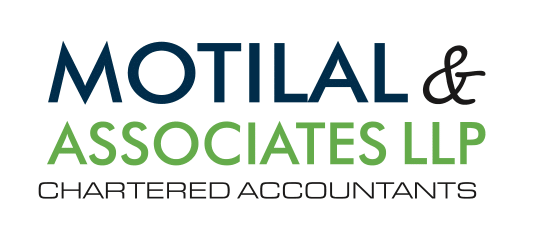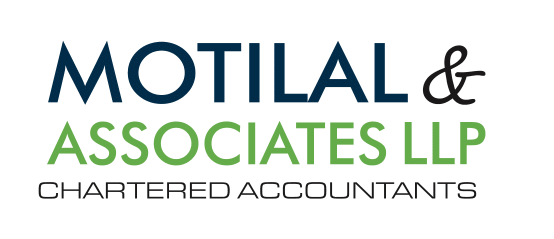Friends! Don’t you get carried away by the big terms “Mergers” & “Acquisitions”! Well, let us understand in a comfortable way with the easiest of examples such as:
When a woman marries a man and they have a baby and become a big happy family, it’s nothing but a merger in corporate terms. Also, therefore, it is the responsibility of both to take care of the requirements of the baby.
While, when a single woman or man adopts a baby from say, a homeless shelter, full control over the infant’s life is in the hands of the person adopting and hence, they are completely responsible for making the decisions for the welfare of the baby too. In corporate terms, that is precisely acquisition of companies.
So now that we have got the simplest understanding of Mergers and Acquisitions (M&A), let us have detailed information about it further in corporate terms.
MERGER
When two companies combine with each other into one big company, it is called as a merger. So, merger occurs when both the companies involve in transfer of ownership, either through a cash payment or through a stock swap between the two companies. It is a voluntary fusion of two companies on essentially equal terms into a new legal body. These separate entities that agree to merge with each other are about equal in terms of scale of operations, customers, size, etc. Due to this reason, the term “merger of equals” is used sometimes.
Types of Mergers:
Larger Companies come together and merger occurs which can happen due to a variety of reasons. There are majorly four types of mergers mentioned in detail below:
1. CONGLOMERATE MERGERS:
When two or more companies involved in unrelated business activities join forces, it is known as Conglomerate mergers. These separate entities might be in different demographic regions or in entirely separate industries. The entities with no overlapping factor as such will only form a merger only if it is beneficial from a shareholder’s wealth perspective. This happens only when both the companies can create synergy. For example, a food chain company merges with a software company. Here, the activities of both the large companies are completely unrelated with each other.
A pure conglomerate merger involves two companies that have absolutely nothing in common. While on the other hand, there is mixed conglomerate which takes place between two large companies that are operating in unrelated business activities but are essentially trying to gain market or product extensions as the merger occurs.
2. HORIZONTAL MERGERS:
When merger occurs between two companies operating in the same business industry, it is called as a horizontal merger. It is by and large a consolidation that occurs between two or more competitors offering same goods or services. The main aim of these larger companies is to reduce the costs and gain a higher share in the market post-merger. When these separate entities join forces, they reduce the competition, achieve economies of scale, control the market and achieve the chief monopoly status.
3. VERTICAL MERGERS:
When two companies that produce different products in the same supply chain together in order to create more efficiency, it is called a vertical merger. Both these companies operate in the same supply chain along the production and distribution process flow of a business.
The quality control is optimized due to a vertical merger. Also, there is a smooth flow of information all along the supply chain of the business which results in merger synergies. The two companies in a vertical merger operate at different levels in the same industry.
Two or more supply companies merge together to improve the logistics, consolidate the staff and also, reduce the time to market the products of the business.
For instance, an FMCG company acquiring a retail outlet company, a cloth textile company acquiring a cotton yarn manufacturer, a car manufacturer acquiring a tire company, etc. are few examples of vertical mergers.
4. EXTENSION MERGERS:
Extension mergers can basically be of two kinds: market extension merger and product extension merger. Market extension merger happens when two companies in the same industry but in the different markets merge together with the purpose of creating a large customer base.
This gives the merging companies an access to a bigger market in the long term.
Whereas, product extension mergers means that both the companies in the same industry but producing separate products merge together to maximize the profits by combining and grouping their products together to reach access to a larger market. For example, a Bluetooth network hardware system manufacturer acquires a wireless LAN system manufacturer.
What are reverse mergers?
Here, it is basically taking over of a public company by a private company without having to pay an initial public offering (IPO). The private company investors directly purchase or acquire a majority of shares of the public shell company; therefore, it is merged with the prior private company. The traditional IPO process which lengthy and time-consuming is not required in case of reverse mergers as private companies hire investment banks to underwrite and also issue shares of the soon-to-be public company. These banks also aid in establishing interests in the stock and giving advice in the suitable initial pricing. It can sometimes prove to be advantageous or even disadvantageous for the private companies as we can see below:
ADVANTAGES:
A reverse merger minimizes the risk of the conventional IPO process which may or may not be accepted depending upon the stock market conditions.
Without the exchange of IPO, a private company gets listed as a public company in minimum costs and saves ample amount of time also in the process.
When a reverse merger occurs, the taxes of the private companies are saved on a decent level depending on the laws of the government in the particular country.
DISADVANTAGES:
The stock price can be negatively affected as significant portion of shares are sold off the public company after the merger.
There may be a lessened demand for shares as the private company may not be able to match the financial and operational scales of the public company.
Inexperienced private company managers may not be able to comply with the additional regulations of the private company which may lead to stagnancy.
ACQUISITIONS:
A corporate transaction wherein one company buys a portion or all of the shares or assets of another company is called an acquisition. The acquiring company gains full control of the target company by purchasing 50% of more of the target firm’s stock and other assets. Thus, the acquirer now makes the decisions about the newly acquires assets on its own without any approval of the shareholders of the company. Basically, the acquiring company builds on the strengths and weaknesses of the acquired company.
In an acquisition, full control is taken of the target company and synergies are captured.
TYPES OF ACQUISITIONS
The types of acquisitions are precisely the reasons due to which the acquisition took place and in which manner it is procuring. There are broadly three types of acquisitions given below:
HOSTILE ACQUISITION:
A Hostile Acquisition is a very powerful acquisition as the acquirer directly goes to the company’s shareholders or fights to replace the management of the target company for accomplishment of acquisition. When the takeover is without the consent of the board of directors, the acquisition is hostile. There could be fight that has to be taken place to achieve this kind of acquisition.
FRIENDLY ACQUISITION:
When an acquiring company gives a proposal to a target company’s management for the acquisition and the latter’s board of directors agree on the same lines, the friendly acquisition takes place amicably by both companies. This kind of acquisition is friendly in nature as the management cordially accepts to hand over the entire company to the acquirer by peaceful means and with full consent so the organizational goals can be achieved successfully and new arenas can be explored.
BUYOUT:
A buyout can be easily described as a business transaction in which one company purchases the shares of another company with the aim of controlling the interests of that company. This is done with the belief that synergy can be obtained by combining operational and financial capabilities in order to receive greater profits than the situation in which both of the parties continued independent.
ADVANTAGES OF MERGERS AND ACQUISITIONS:
GLOBAL MARKET ENTRY:
Mergers really help in entering new territories across the globe in different markets all over. Global market is basically a high world-level market wherein any company can sell their products and services without any restrictions or stoppages for entrances. Through mergers, the merged companies easily enter this market and then embrace various regions internationally.
It is the primary characteristic of a successful business to identify the need in a market and make efforts to fulfill that need. At the same time, to think logically, it is difficult for any business to just go directly and establish itself into a new market or a different geographical region. In such cases, merging with a target company in that area helps to get the business started in full swing easily.
ECONOMIES OF SCALE:
When larger companies with higher output merge together with a smaller company, average costs can be reduced due to which lower prices can be offered to the customers. Hence, it results in a bigger size and gain for the companies involved.
There is a greater potential for profitability, a solider capital base and sustainability in operations for the companies when merger occurs. Economies of scale can be achieved in various zones:
Technical Economies:
When the fixed investment of the companies is higher and there are larger machines, the output achieved can be increased efficiently. When the production costs are reduced, automatically, the prices can be lowered and profits can be increased for the companies involved.
Financial Economies:
When larger companies come together, this big fat merged company had higher power and can negotiate or bargain a better rate of interest from the financial institutions. Mergers and acquisitions improve the overall profitability of the business of the merged company.
Also, the creditworthiness of the companies is increased substantially in the financial markets. Therefore, the merged company can obtain loans at subsidized rate of interests due to its higher bargaining power.
Bulk-buying:
When the raw materials are bought in larger quantities, this big fat company that is formed can ask for higher discounts from the suppliers. This, in turn, reduces the cost of production and hence, the costs can be lowered and sales can increase concurrently.
Organizational Economies:
A subordinate under the command of two bosses will never know the perfect thing to do as he will be guided and instructed in two different ways. In the same way, one head office is much better than two as the decisions are taken unanimously with greater brainstorming by both the companies and the best conclusion comes out of that. Therefore, the merged company has an accurate unity of command because it is led by one efficient management.
GAIN MARKET SHARE:
When a merged company provides adequate and continuous supply of goods and services according to the needs of the clients, it helps the market share to increase concurrently. Also, entering into an agreement with clients with fixed supply of products and services can lead to long term secured market share.
For instance, when company A and company B are in a similar market and are in competition with each other, both can lose to another bigger company C. But, when both the companies A and B decide to merge together, they form a bigger company AB which gains a bigger market share and rules the overall market devoid of all competition.
INCREASE IN GROWTH AND REVENUE:
The main aim of any business is to maximize profits and that is why, when a merger occurs, both the companies would want the revenues to grow and subsequent profits to increase. The merged companies grow faster because of the capital investment for research and development, marketing and merged talents. Thus, there is higher revenue because of the positive cash flow in the company.
The value of the merged company increases by accessing assets and funds to support business development and growth. This proves beneficial if the company was struggling to survive prior to this.
GOOD REPUTATION:
In successful mergers, the goodwill of the merged company is boosted and it enjoys a nice and well-built reputation in the global markets. The confidence of the shareholders is increased in the merged company and they have faith in investing more in the business. This creates a good image for the merged company among the consumers. The stock prices of the products and services rise due to good image-building.
HELPS FACE COMPETITION:
When two competitive companies merge together, they form one big company that might enjoy a monopoly status in the market. Thus, other small companies do not stand a chance in front of the merged company. Also, it can provide goods and services to the customers at competitive prices.
Mergers also help the merged company to deal with the threats of the multinationals and can successfully compete on an international scale in markets worldwide. This is very crucial to sustain in this era of global markets.
TAX BENEFITS:
The merged company enjoys tax benefits abundantly as it receives a subsidized rate of taxation. Likewise, when a successfully profit-making company takes over a sinking loss-making company, the merged company receives higher tax benefits. Due to long-term capital gains on sale of equity shared, the merged company could receive exemption from taxes depending upon the laws of the country the company operates in.
MARKET POWER:
When an acquisition takes place, the market share of the company is increased and this, in turn, reduces the competition’s stronghold. The rival companies might be strong and challenging but the acquired company can reduce the capacity of the competitors by growing itself and making things even. Market synergies are achieved through this process.
RESEARCH AND DEVELOPMENT:
When larger companies merge together, their capital share is combined and hence, there is uninterrupted investment in research and development programs. They can even appoint skilled professional people to carry out these R&Ds which can result in better quality of goods to the end consumers.
This is extremely crucial for the pharmaceuticals as they require a large amount of investment. Actually, an estimated 90% of the researches by the drug companies don’t make it to the main market. There is a bigger chance of failure of the researches done which can be tolerated only by a bigger merged firm that can encourage innovation.
REDUCTION IN ENTRY BARRIERS:
With the help of mergers and acquisitions, the companies are able to enter new product lines and worldwide markets instantly with the company that is already recognized globally with a good brand image and an already existing client base over there.
Without this, market entry can be a very difficult and costly scheme for small companies due to varied expenses like market research, product development and time required to build a new considerable client base. An acquisition helps to overcome these challenging barriers and cause reduction in the risks of adverse and negative reactions by the competitors.
DISADVANTAGES OF MERGERS AND ACQUISITIONS:
A business can grow abundantly in every manner because of mergers and acquisitions. The revenues can increase and the company can be known worldwide. However, some disadvantages can also occur and hitches can take place in the business due to M&As. The pitfalls must be put into consideration before opting for an acquisition because many of the M&As are falling apart due to various reasons which prove to be very harmful for both the companies. Many perspective M&As taken place in the United States have also faced a major fallout in recent years.
What are biggest causes for Merger or Acquisition deals falling apart?
CONFLICTING OBJECTIVES:
The objectives of both the companies in an M&A must be the same so that the activities can move forward smoothly. The aims and visions of both the companies should be the identical and both must be on the same page so that decisions can be taken efficiently and effortlessly.
However, if there is a clash in interests, such as company A would want to expand globally while company B might want cost reduction, then there might be resistance to the acquisitions and the company will not be able to grow. This might not prove beneficial to the business.
BRAND DAMAGE:
Prior to when the M&A deals are made, the decision must be made so as both the brands will be combined or kept separate. This might also hurt the brand image of the existing company.
The consumer perceptions might also change as they might not view both the companies in a compatible way and hence, they may not accept this change. When the M&A is not done correctly with enough thought, irreparable damage can be done to the brand and the entire reputation of companies can be ruined.
CULTURE CLASHES:
Each company has its own working style and the corporate culture differs from company to company. That is why, when the corporate cultures of two firms do not match, conflicts are about to arise post-merger. Since the inception, a company follows its own distinct culture which is very difficult to change.
If it does not match with other target company, the acquiring can create many problems. There will not be any integration between the employees and managers of both the companies and their activities will also not match. This may cause anxiety and antagonism among the employees.
DISECONOMIES OF SCALE:
The main purpose of most M&As is primarily to enter economies of scales for their businesses. But, on the contrary, sometimes dis-economies of scale take place when the per unit of production cost becomes higher due to rise in coordination costs.
This might lead to lower efficiency of operations within the company.
Diseconomies of scale can also take place when there is failure in communication among the employees and managers and difference in opinions.
HIGHER PRICES OF CONSUMERS:
When an M&A occurs, both the companies combine to become a one fat big company. This helps the acquired company to beat their competitors easily and move ahead in the growth direction. Conversely, the bigger company can increase the prices of its goods and services due to the monopoly status it has achieved which does not prove to be advantageous for the consumers.
THE DILEMMA OF LAYOFFS:
One of the major advantages of M&A is the reduction in the labor force required for the merged bigger organization.
This is to avoid duplication of duties as people of two departments must not waste time doing the same activity for the company.
This reduces the excessive wage costs. However, due to this cost-saving, the employees might be negatively affected as they may fear losing their jobs and have mistrust in the organization.
The employee morale falls down excessively due to these measures leading to decreased motivation and reduction in productivity.



